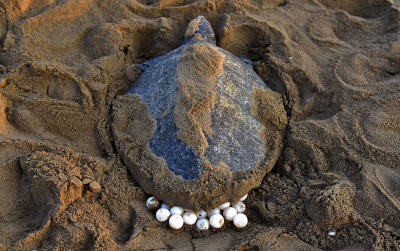 |
| Parapteronotus hasemani, a species of ghost knifefish used in this study |
Electric fish produce electrical signals from their electric organs to sense their environment and communicate with others. The Apteronotids (ghost knifefish) use action potentials of specialized cells that originated from motor neurons in the spinal cord to produce electrical signals. Their electric organs exhibit the highest frequency action potentials of any animal, frequently exceeding 1 kHz. They also require no signal from the brain to produce these electrical discharges. The researchers compared genes in electrical and non-electrical fish that encode voltage-gated sodium channels. Sodium channels regulate the number of sodium ions travelling in and out of cells, allowing electrical signals to be generated that regulate cellular functions. Voltage-gated sodium channels open and shut depending on the voltage across the cell membrane. In an ancestor of a group of fish within the Apteronotids, the researchers discovered that the gene that encodes sodium channels in muscle was duplicated.
| Image comparing amino acid sequences from Thompson et al. (2018) Rapid evolution of a voltage-gated sodium channel gene in a lineage of electric fish leads to persistent sodium current. |
The gene was able to make sodium channels in the spinal cord throughout the fish's evolution. The motor neurons that control the firing frequency of the electric organs are also located in the spinal cord. The gene also gained a mutation over the fish's evolution that allows the channel to open more frequently, which could explain the electrical organ's high frequency firing.
These sodium channels are only found in the muscles of most animals, so this is a unique characteristic of the ghost knifefish. Sodium channels are often the target of neurotoxins and play a role in several neurological and muscle disorders in humans. Further research on this mutation could help determine the mutations that lead to these disorders in humans.




















